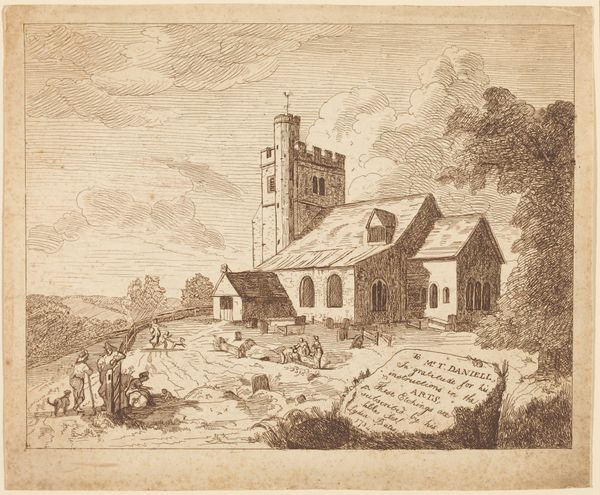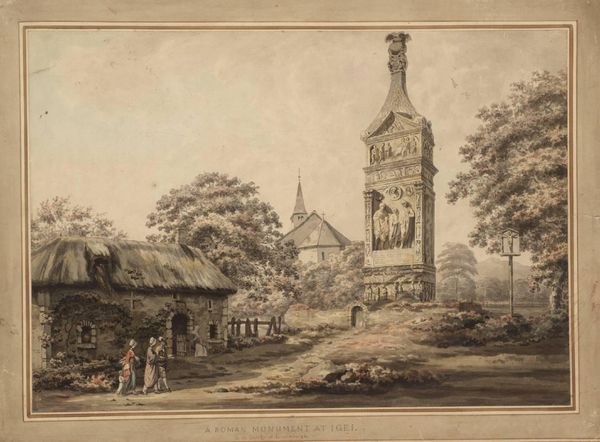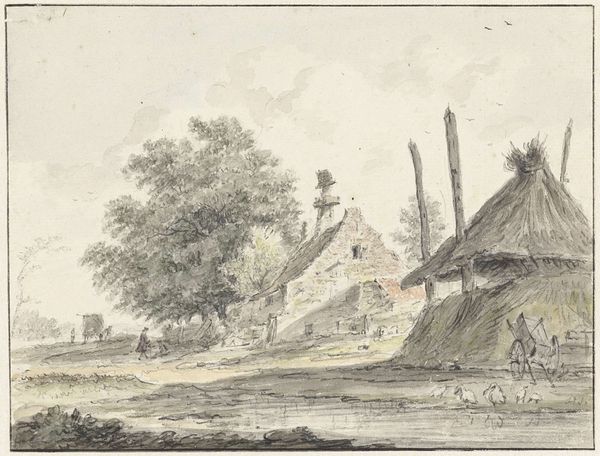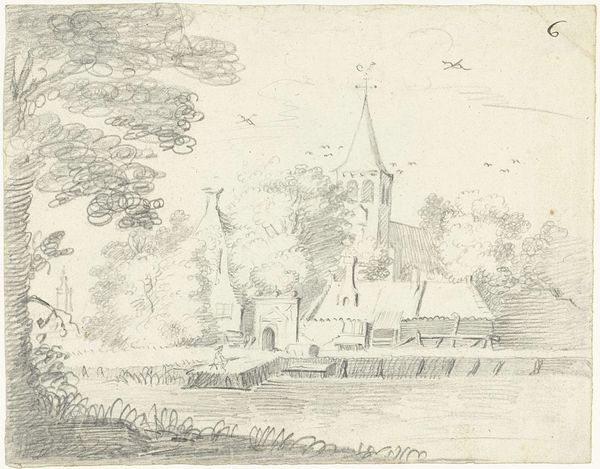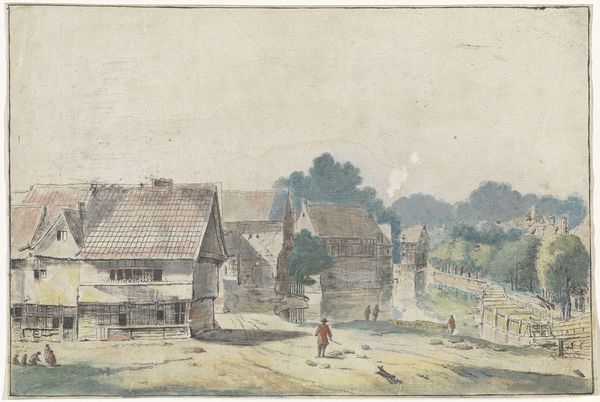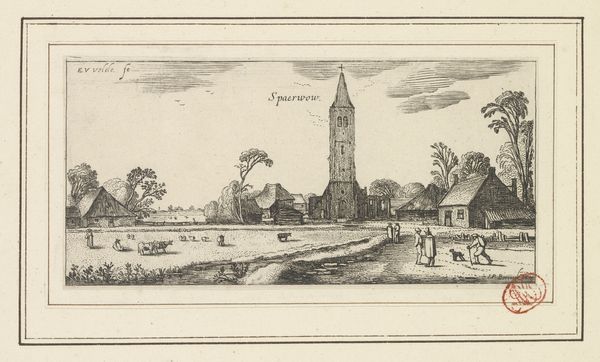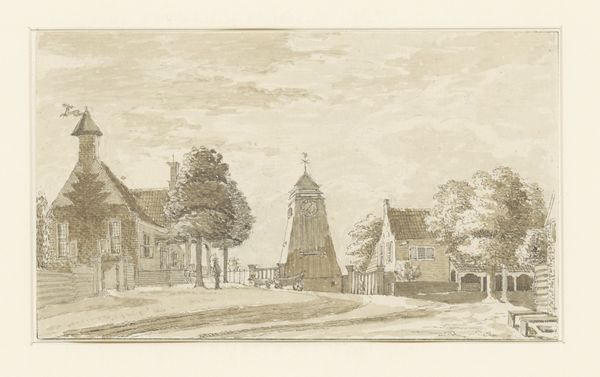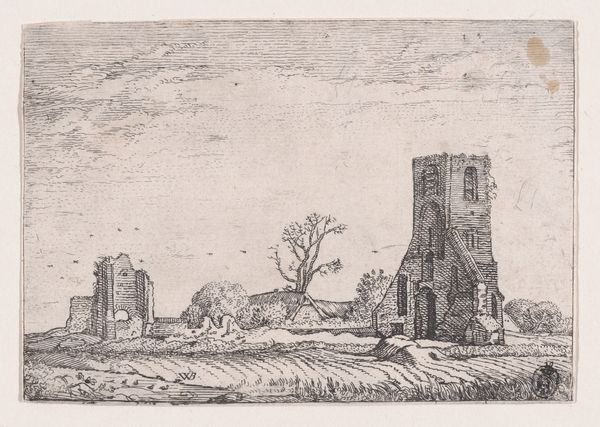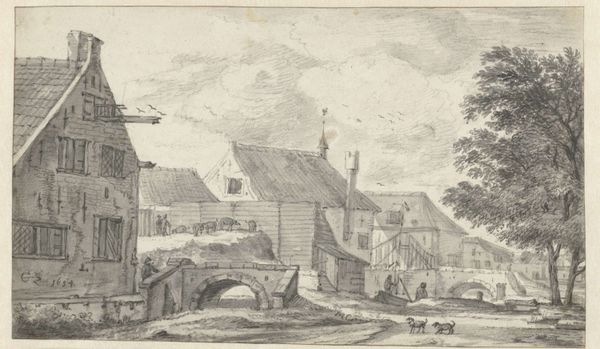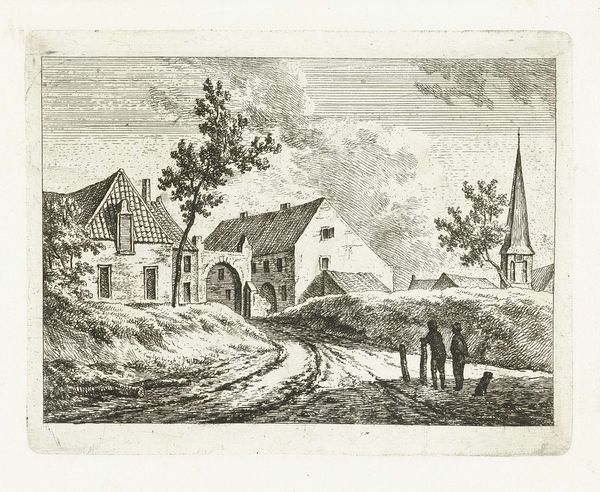
drawing, plein-air, watercolor, architecture
#
drawing
#
plein-air
#
landscape
#
watercolor
#
architecture
Dimensions: height 148 mm, width 190 mm
Copyright: Rijks Museum: Open Domain
This watercolor, made by Jacques Kuyper, shows a scene at Halfweg. Kuyper was working in the late 1700s, a period when Europe was rapidly industrializing, and the countryside remained a potent symbol of tradition. Painted with watercolor on paper, it is very different from how a modern painting would be made. The pigments were likely ground by hand and mixed with a binder and water, a world away from the mass-produced colors available today. The artist carefully applied thin washes of color, building up the image layer by layer. Look at the thatched roof of the building: notice how the layering of the paint mimics the texture of the straw itself. The focus of the image is a stone obelisk, a symbolic marker. The act of creating the watercolor drawing is also a type of labor – a slow, deliberate act of observation and transcription. Kuyper's painting reminds us that even in the age of industry, the hand-made and the carefully observed still held value.
Comments
No comments
Be the first to comment and join the conversation on the ultimate creative platform.
